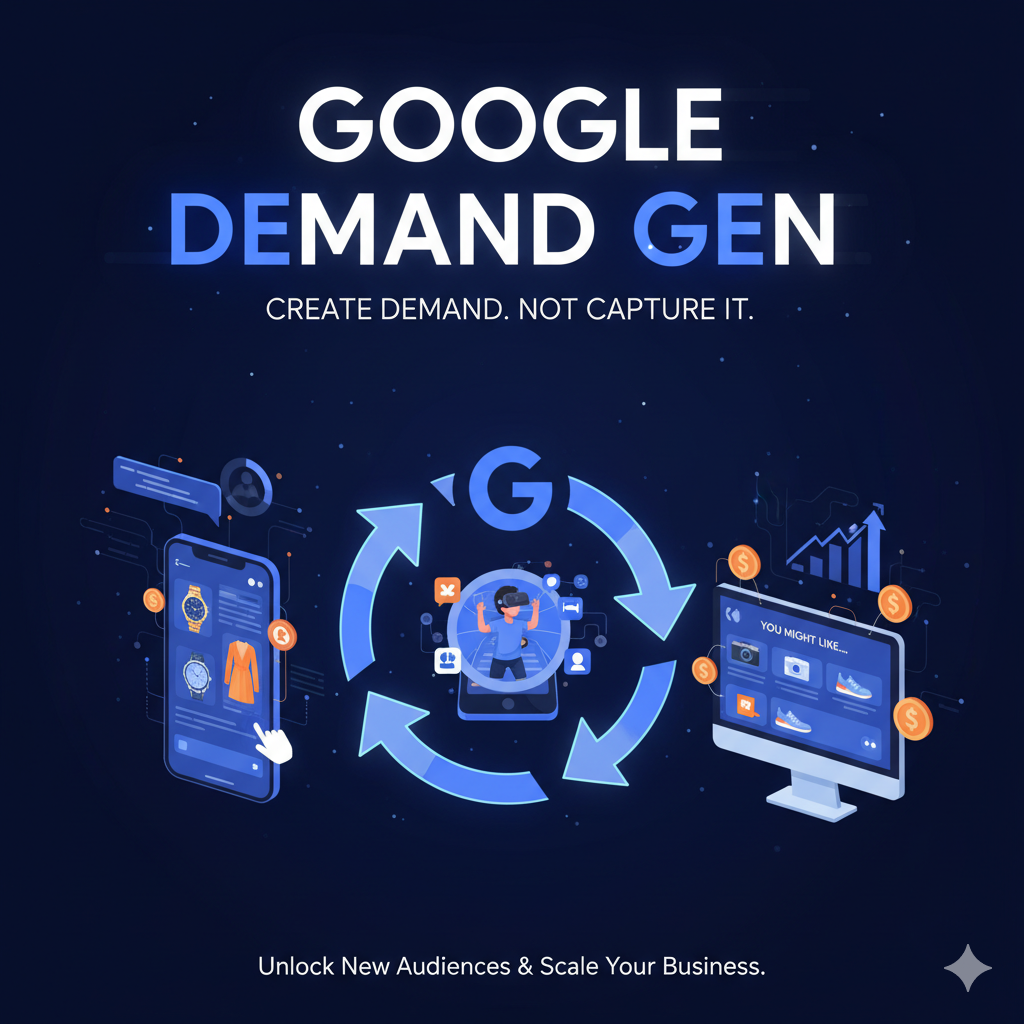
Google Demand Gen campaigns are becoming one of the most powerful tools for brands that want to reach new audiences, increase engagement, and drive conversions using visually rich, personalized content. Unlike Performance Max or Search campaigns, Demand Gen focuses on creating demand, not capturing it. This means you’re reaching people before they search — right when they’re exploring, scrolling, and discovering new products.
In this blog, let’s break down how Demand Gen works, why it’s effective, and how you can use it to scale your business.
What Is Google Demand Gen?
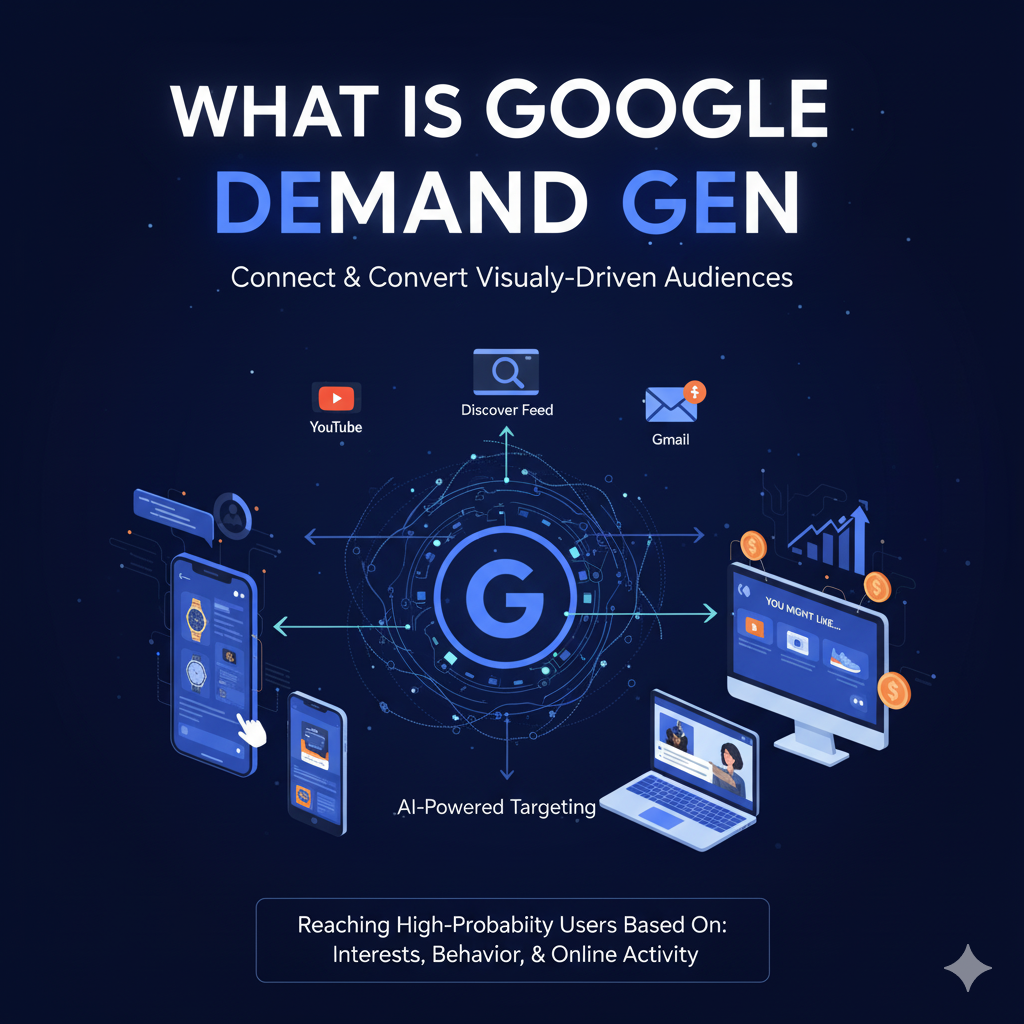
Google Demand Gen is a campaign type designed to help brands connect with people who are visually inspired and likely to take action. It uses Google’s strongest AI signals and placements — such as YouTube, Discover Feed, and Gmail — to show your ads to users who match your behavior-based audiences.
Instead of waiting for someone to search for your product, Demand Gen places your brand in front of users who have a high probability of clicking, engaging, or purchasing based on their online activity, interests, and behavior.
Why Demand Gen Is Important for Modern Marketing
Demand Gen is built for brands that rely heavily on creative storytelling and high-quality visuals. With placements across YouTube and Google’s content surfaces, the campaign helps you influence customers early in the funnel. This is especially powerful for e-commerce, fashion, beauty, electronics, and lifestyle brands.
The campaign also uses machine learning to optimize delivery, meaning your ads reach the most relevant and profitable audiences over time.
Where Your Demand Gen Ads Appear
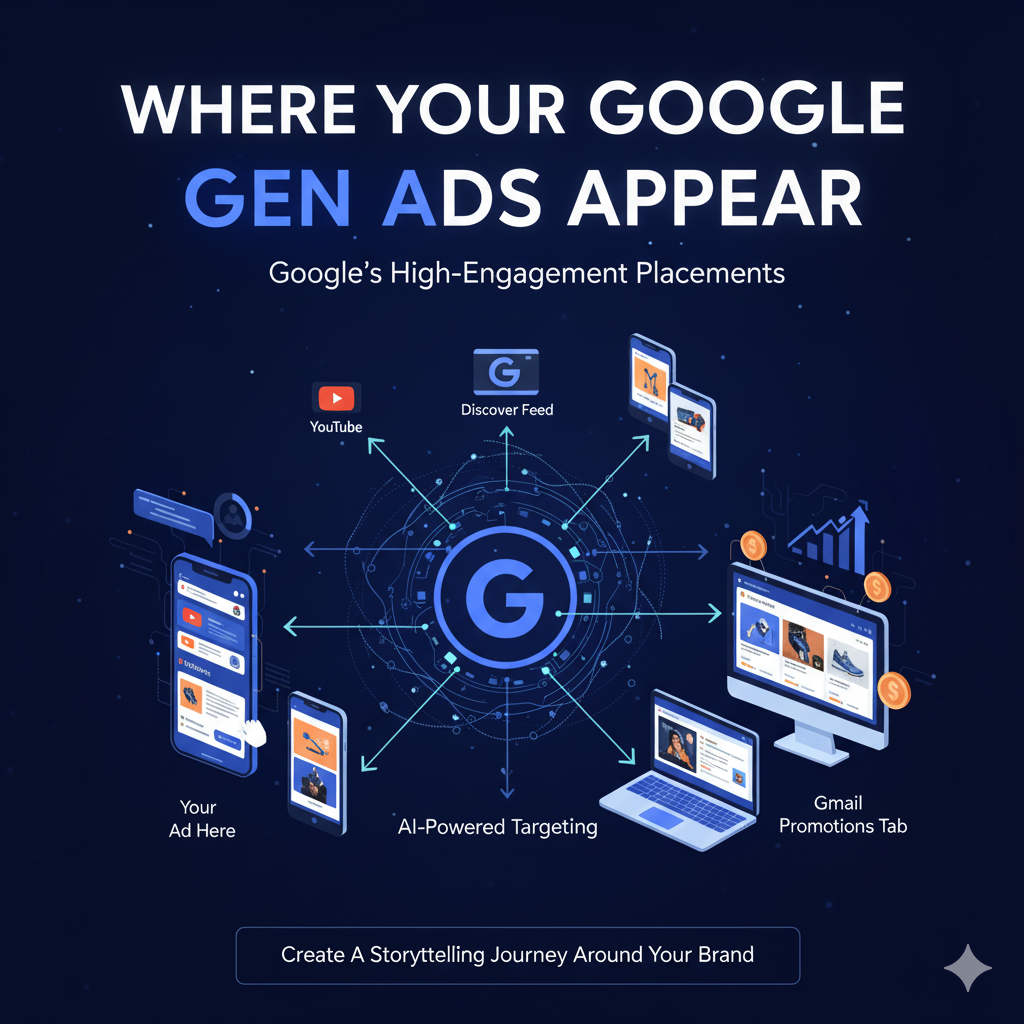
Demand Gen uses Google’s high-engagement placements — the places where users spend time exploring and discovering content, not searching.
YouTube
Your ads can appear in YouTube videos, YouTube Shorts, and the homepage feed. These placements help you connect with customers who are visually driven and ready to explore new products.
Discover Feed
This is one of Google’s most valuable content surfaces. When users scroll through Discover, your ad appears like a native post — visually appealing, clickable, and tailored to their interests.
Gmail Promotions Tab
Your ads appear inside the user’s Promotions inbox, where customers often check for deals, offers, and new product launches.
These placements work together to create a storytelling journey around your brand.
How Demand Gen Targets the Right Audience
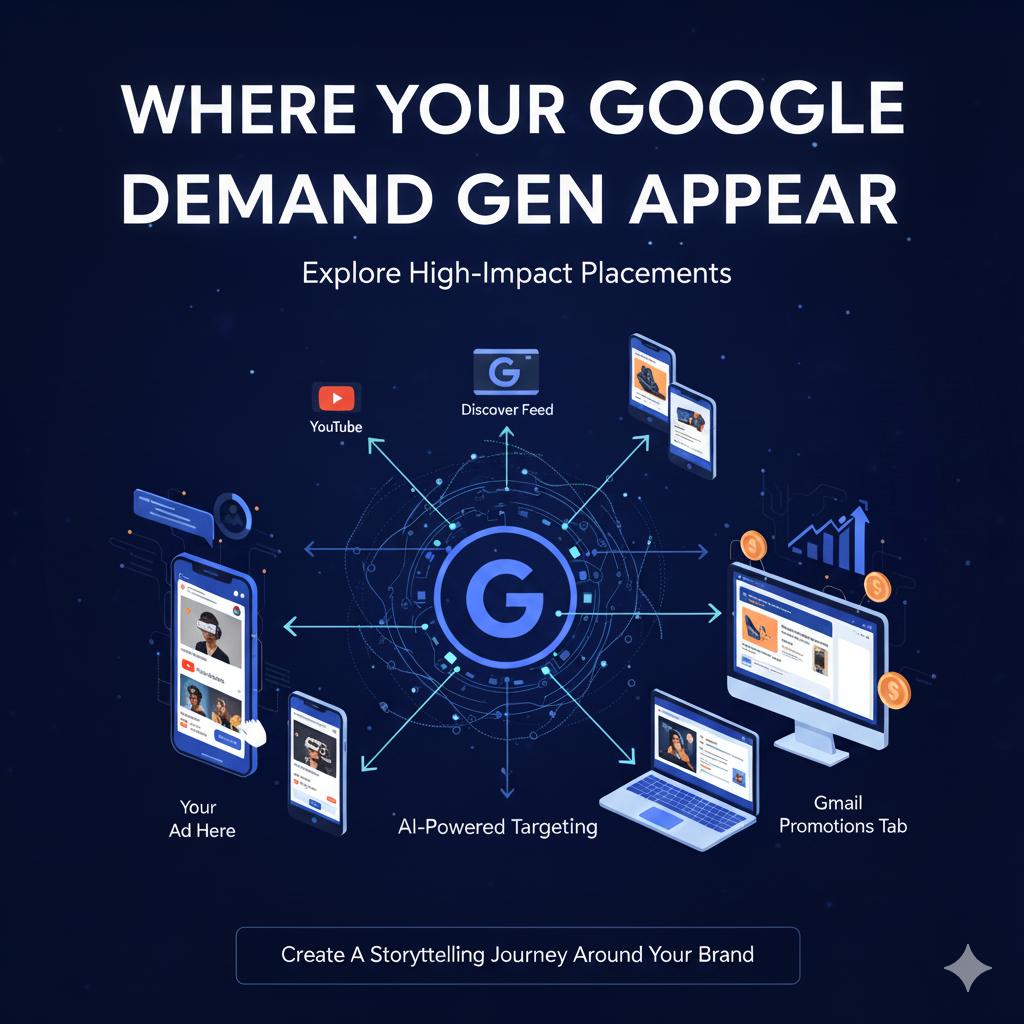
Demand Gen uses AI-driven signals instead of just keywords. This allows Google to predict which users are most likely to take action.
Lookalike Audiences
Google finds new users who behave similarly to your existing customers. This expands your reach without compromising relevance.
Custom Segments
You can target people based on interests, recent browsing activity, or competitors they’ve interacted with.
Website Visitors & Engaged Users
Demand Gen also supports retargeting, helping you re-engage people who already know your brand but haven’t taken action yet.
This combination ensures your ads reach new audiences while also nurturing warm leads.
The Role of Creative in Demand Gen
One of the biggest strengths of Demand Gen is its focus on creatives. Google recommends using strong visuals — high-quality carousels, videos, and image ads — because the algorithm heavily rewards engagement.
Images
Use clean, bold, high-resolution images that clearly highlight the product.
Videos
Short, punchy videos (6–15 seconds) tend to perform better and improve conversions.
Carousels
Carousels allow you to tell a visual story, highlight different features, and increase interaction.
Good creatives can drastically improve CTR and conversion rates.
How Demand Gen Optimizes Your Campaign
Google Demand Gen uses algorithms to determine which creative, audience group, and placement combination works best for your goals.
Optimized Targeting
Even if your audience list is small, Google expands the reach to people who look similar to high-performing users.
Smart Bidding
You can choose from:
- Maximize Conversions
- Maximize Conversion Value
- Target CPA
- Target ROAS
The campaign learns from every click and conversion to improve performance over time.
How to Measure Performance in Demand Gen
Demand Gen focuses on engagement and action-driven metrics.
Key Metrics to Track
- Click-through rate
- Engagement rate
- Conversions
- Conversion value
- View-through conversions
- Cost per acquisition
Over time, you’ll see which creative formats drive the strongest results.
Best Practices for Running a Highly Effective Demand Gen Campaign
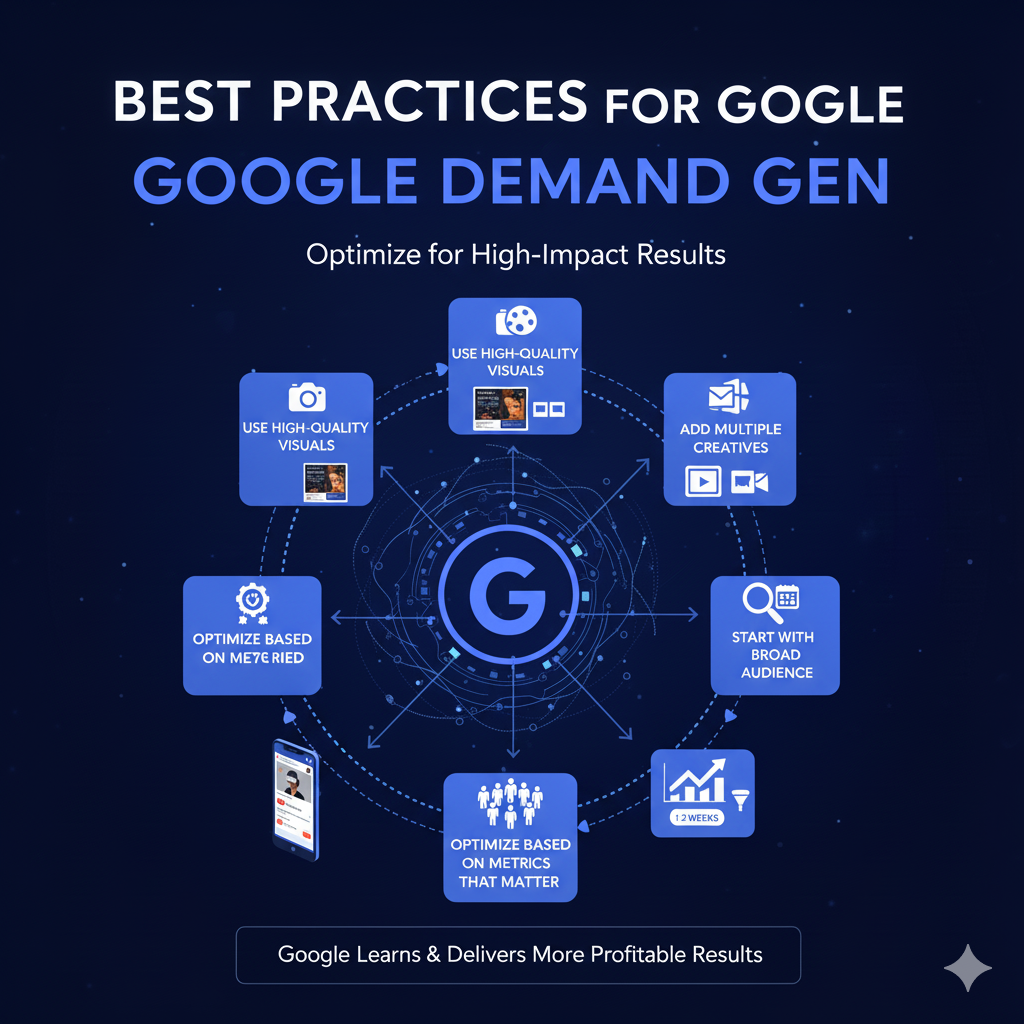
To get the best results, you need strong creative, strategic targeting, and optimized bidding.
Use High-Quality Visuals
Demand Gen is visual-first. Poor creatives reduce engagement and limit optimization.
Add Multiple Creatives
Provide videos, images, and carousels so Google can test and learn faster.
Start with a Broad Audience
Let Google explore which users respond best; restrict later only if necessary.
Allow Learning Period
Give the campaign time to optimize — typically 1 to 2 weeks.
Optimize Based on Metrics That Matter
Focus on actions and conversions, not impressions alone.
These steps help Google understand your audience better and deliver more profitable results.
Conclusion
Google Demand Gen is designed to help brands inspire and convert users through visually rich ads and AI-powered targeting. In today’s digital world, people discover products while scrolling — not only when they search. Demand Gen places your brand in these high-attention spaces like YouTube, Discover, and Gmail, helping you reach users who are already showing strong interest signals.
Whether you’re promoting fashion, gadgets, lifestyle products, or services, Demand Gen helps you influence high-intent audiences early in their journey. With smart bidding, strong creatives, and Google’s predictive AI, your campaigns can scale efficiently while reducing wasted ad spend.
By combining creativity with data-driven targeting, Demand Gen becomes a powerful tool for increasing brand awareness, improving engagement, and driving conversions. Done right, it can guide users from discovery to action — making it an essential strategy in today’s marketing ecosystem.